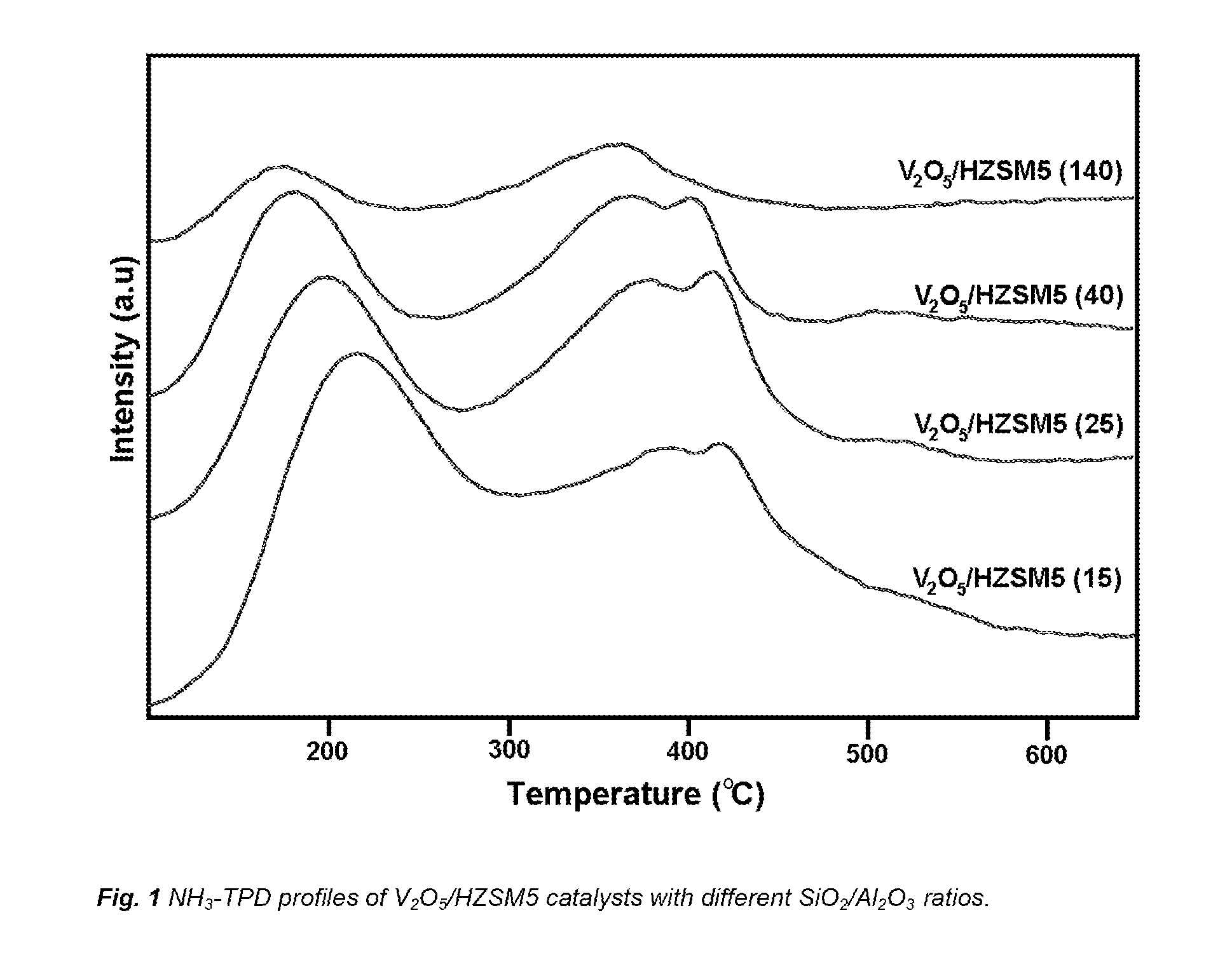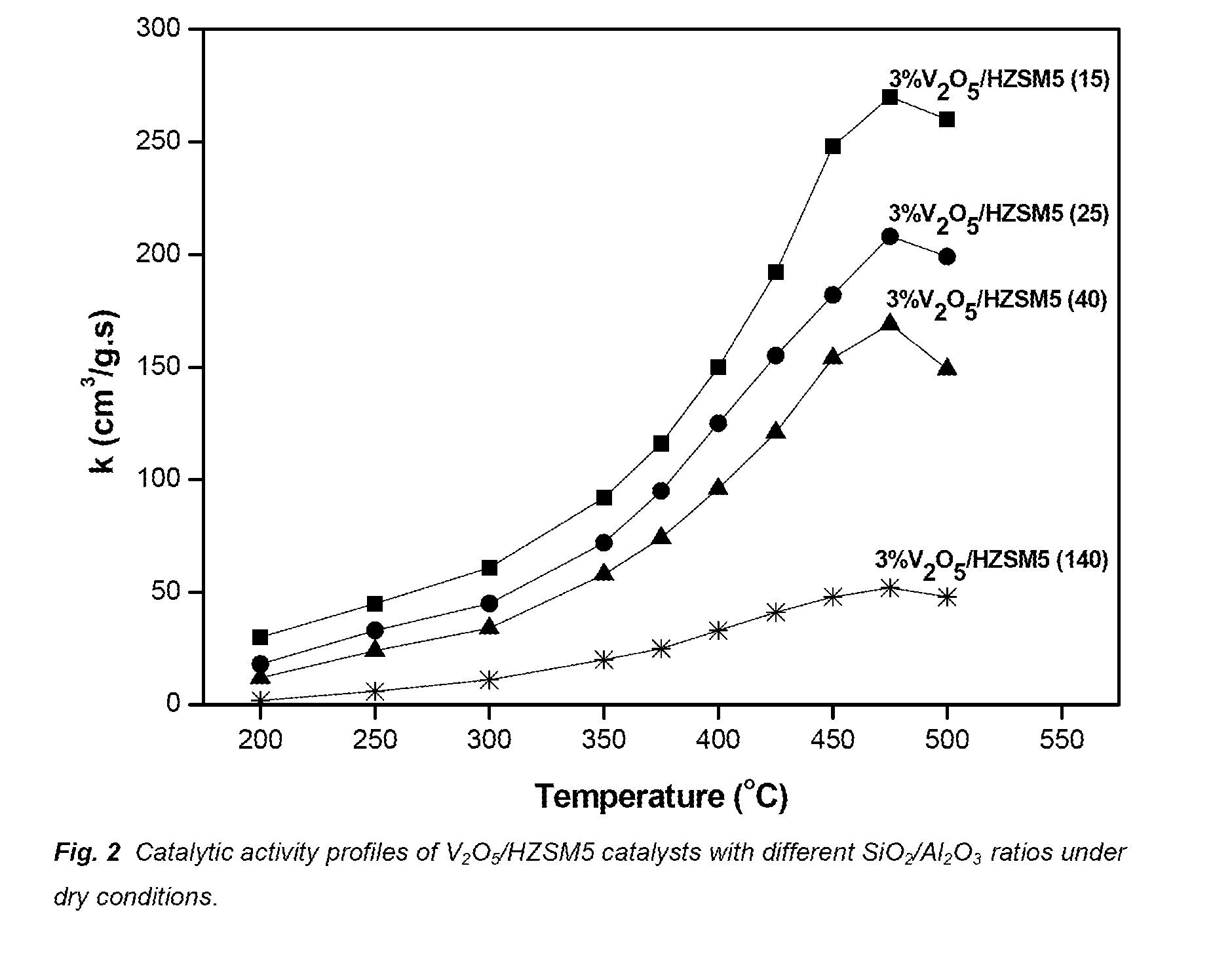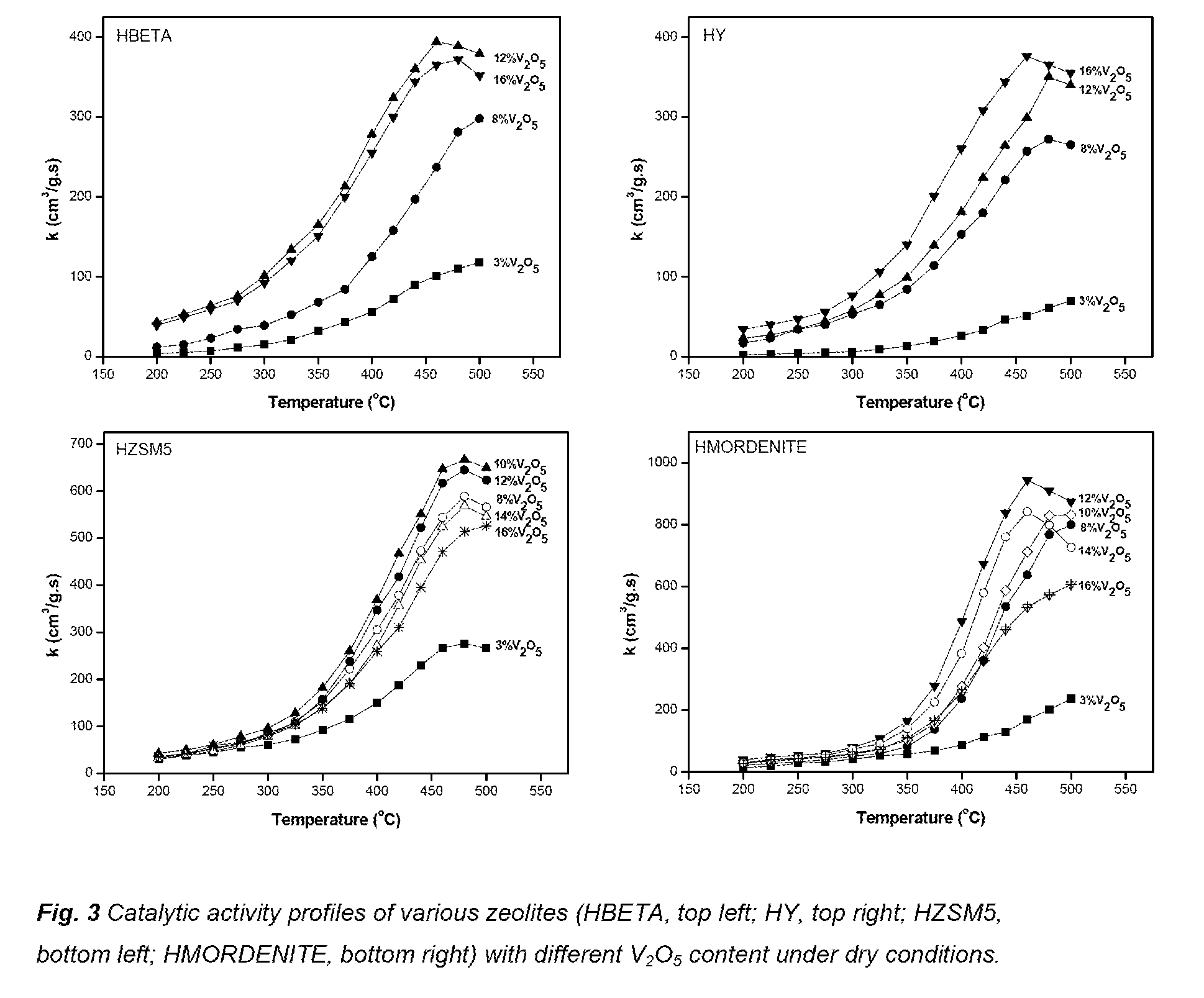Vanadia-supported zeolites for scr of no by ammonia
a technology of vanadia-supported zeolites and ammonia, which is applied in the field of selective removal of nitrogen oxides (nox), can solve the problems of low activity, low cost, and limited use of tiosub>2/sub>as a suppor
- Summary
- Abstract
- Description
- Claims
- Application Information
AI Technical Summary
Problems solved by technology
Method used
Image
Examples
Embodiment Construction
[0035]The first aspect of the present invention concerns the use of a zeolite catalyst in the selective removal of nitrogen oxides from gases containing a significant amount of alkali metal and / or alkali earth compounds, which catalyst comprises:[0036]a. a zeolite support with a SiO2 / Al2O3 ratio lower than 40[0037]b. 8% w / w or more V2O5
which removal takes place in the presence of a nitrogen containing compound selected from ammonia, ammonium salts, urea or a solid urea derivative.
[0038]In one embodiment the zeolite has a SiO2 / Al2O3 ratio lower than 40. In another embodiment the zeolite has a SiO2 / Al2O3 ratio of 25 or lower. In another embodiment the zeolite has a SiO2 / Al2O3 ratio between 10 and 25. In another embodiment the zeolite has a SiO2 / Al2O3 ratio of 15 or lower. In preferred embodiments the zeolite has a SiO2 / Al2O3 ratio selected from 15, 12 or 10.
[0039]In a further embodiment the zeolite is selected from HZSM5, HMORDENITE, HBETA and HY. In a preferred embodiment the zeolit...
PUM
| Property | Measurement | Unit |
|---|---|---|
| Temperature | aaaaa | aaaaa |
| Temperature | aaaaa | aaaaa |
| Temperature | aaaaa | aaaaa |
Abstract
Description
Claims
Application Information
 Login to View More
Login to View More - R&D
- Intellectual Property
- Life Sciences
- Materials
- Tech Scout
- Unparalleled Data Quality
- Higher Quality Content
- 60% Fewer Hallucinations
Browse by: Latest US Patents, China's latest patents, Technical Efficacy Thesaurus, Application Domain, Technology Topic, Popular Technical Reports.
© 2025 PatSnap. All rights reserved.Legal|Privacy policy|Modern Slavery Act Transparency Statement|Sitemap|About US| Contact US: help@patsnap.com



